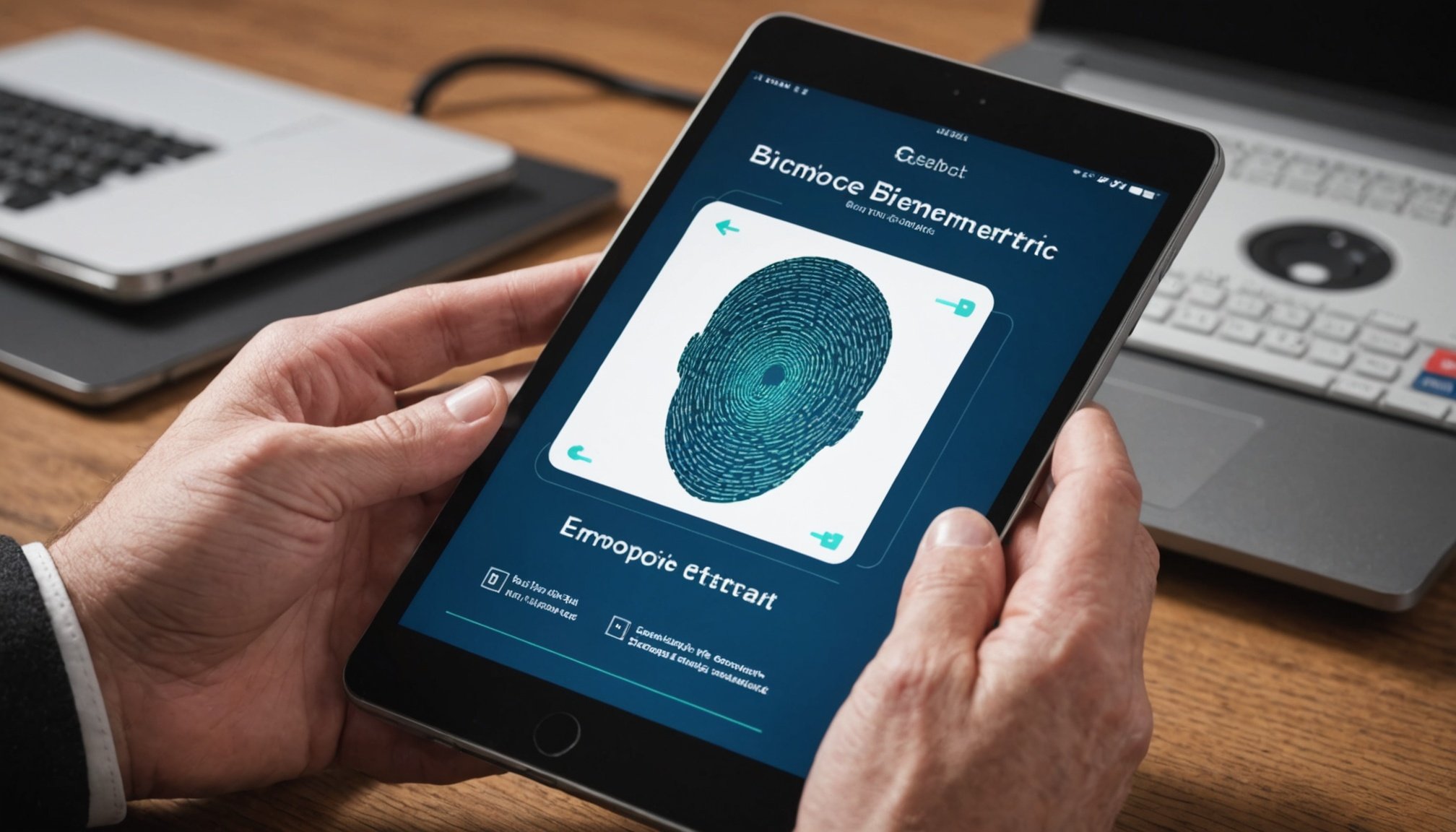The Ultimate UK Handbook for Legally Gathering Employee Biometric Data
Understanding Biometric Data and Its Significance Under UK GDPR
In the modern workplace, the use of biometric data, such as fingerprints, facial recognition, and iris scans, is becoming increasingly common. However, this type of data is classified as a ‘special category’ of personal data under the UK General Data Protection Regulation (UK GDPR), which means it is subject to stricter processing conditions and rules due to its sensitivity.
“Biometric data is sensitive since it uniquely identifies individuals and is inherently linked to them. Its misuse can lead to significant privacy and security risks,” explains the guidance from LegalVision[1].
Also read : Mastering Workplace Bullying and Harassment: A Comprehensive Legal Guide under UK Employment Law
Here are some key points to understand about biometric data:
- Definition: Biometric data is personal data resulting from specific technical processing relating to physical, physiological, or behavioural characteristics that allow or confirm an individual’s unique identification[1].
- Examples: This includes fingerprints, facial recognition, iris scans, voice recognition, and DNA[1][2][3].
- Legal Classification: Under the UK GDPR, biometric data is considered special category data, which requires explicit consent and stricter protection measures[1][2].
Ensuring Lawful Basis and Consent for Processing Biometric Data
To legally gather and process biometric data from employees, employers must establish a valid lawful basis and obtain the necessary consent.
Also to discover : Mastering Domain Name Conflicts: The Ultimate Legal Handbook for UK Enterprises
Lawful Basis
The UK GDPR sets out several conditions for processing personal data, but for biometric data, explicit consent is often the most appropriate basis. Here are the steps to ensure a lawful basis:
- Explicit Consent: Consent must be informed, freely given, and documented. This can be challenging to obtain in practice, especially in an employment context where there may be a power imbalance[1].
- Alternative Conditions: Other conditions might apply depending on the context, such as public interest or legal obligations, but these would be subject to strict justification[1].
Consent Mechanisms
Consent is a critical element in the implementation of biometric systems. Here’s how to ensure proper consent:
- Informed Consent: Employees must be fully informed about the purpose of collecting their biometric data, how it will be used, and their rights regarding this data[2].
- Parental Consent: While not typically applicable in an employment setting, it’s worth noting that for minors or individuals unable to provide informed consent, parental consent is required in other contexts like schools[2].
- Withdrawal of Consent: Employees should be aware of their rights and be able to withdraw their consent at any time. Employers must ensure that withdrawing consent does not disadvantage the employee[2].
Implementing Robust Security Measures
Protecting biometric data is crucial due to its sensitive nature. Here are some measures employers should take:
Technical and Organisational Measures
- Encryption: Biometric data should be encrypted to ensure that only authorised users can access it[4].
- Access Controls: Implement strict access controls to ensure only authorised staff can access the biometric data. This includes procedures for why, when, and how access is permitted[4].
- Regular Updates: Regularly update and assess security measures to ensure they remain effective against evolving threats[1].
Data Protection Principles
- Secure Processing: Ensure biometric data is processed in a secure manner, protected from unauthorised processing, accidental loss, destruction, or damage[4].
- Retention Policy: Develop a retention policy that clearly sets out the retention period for biometric data. Data must be kept for no longer than necessary for the purposes for which it is processed[4].
Conducting Data Protection Impact Assessments (DPIAs)
Given the high risk associated with processing biometric data, conducting a Data Protection Impact Assessment (DPIA) is legally required.
What is a DPIA?
A DPIA is a process to help organisations identify and mitigate data protection risks. It is mandatory where processing is likely to result in a high risk, such as significant physical, material, or non-material harm to individuals[4].
Steps for Conducting a DPIA
- Identify Risks: Assess the potential risks associated with processing biometric data, including privacy and security risks.
- Mitigate Risks: Implement measures to mitigate these risks, such as encryption and access controls.
- Consult ICO: If the DPIA identifies a high risk that cannot be mitigated, consult with the Information Commissioner’s Office (ICO) before processing the data[4].
Legal Advice and Compliance
Compliance with the UK GDPR is complex, especially when dealing with biometric data. Here’s why legal advice is essential:
Importance of Legal Advice
- Complexity: The rules surrounding biometric data are highly complex, and legal advice can help navigate these requirements[1].
- Policy Development: Data protection lawyers can help develop UK GDPR-compliant biometric data policies and guide businesses through conducting DPIAs[1].
- Consent Mechanisms: Lawyers can ensure that consent mechanisms meet the required standards and advise on implementing robust security practices[1].
Practical Insights and Actionable Advice
Here are some practical tips for employers to ensure compliance when using biometric data:
Transparency
- Inform Employees: Clearly inform employees about the use of biometric data, the purposes for which it will be used, and their rights.
- Documentation: Document all processes related to biometric data, including consent, storage, and access controls.
Security
- Regular Audits: Regularly audit your security measures to ensure they remain effective.
- Training Staff: Train staff on the importance of data protection and the procedures for handling biometric data.
Consent Management
- Easy Withdrawal: Make it easy for employees to withdraw their consent without any negative repercussions.
- Alternative Systems: Offer alternative systems for employees who opt out of biometric data collection, ensuring equal access to services[2].
Examples and Case Studies
Biometric Systems in Schools
The updated guidance on biometric technology systems in Scottish schools provides a useful example of how to implement biometric systems while addressing privacy concerns. Schools use biometric systems for attendance, cashless transactions, and library services, but they must ensure explicit consent, offer opt-out provisions, and implement robust security measures[2].
Immigration and Nationality Applications
In the context of immigration and nationality applications, biometric data is used extensively. For instance, applicants must provide fingerprints and facial images, which are then used to verify identity and ensure compliance with immigration laws. This process highlights the importance of clear policies on retention and usage of biometric information[3][5].
Table: Key Requirements for Processing Biometric Data Under UK GDPR
| Requirement | Description |
|---|---|
| Lawful Basis | Explicit consent or other justified conditions under UK GDPR[1] |
| Consent | Informed, freely given, and documented consent[1][2] |
| Security Measures | Encryption, access controls, and regular security updates[4] |
| DPIA | Mandatory for high-risk processing; involves risk identification and mitigation[4] |
| Retention Policy | Data must be kept for no longer than necessary for the purposes for which it is processed[4] |
| Transparency | Clear documentation and communication with employees about biometric data use[2] |
| Legal Advice | Essential for navigating complex UK GDPR requirements[1] |
Frequently Asked Questions
Why is Biometric Data Considered Sensitive Under UK GDPR?
Biometric data is sensitive because it uniquely identifies individuals and is inherently linked to them, posing significant privacy and security risks if misused[1].
What Are Examples of Biometric Data?
Examples include fingerprints, facial recognition, iris scans, voice recognition, and DNA[1][2][3].
How Do I Ensure Compliance When Using Biometric Data?
Ensure a lawful basis, obtain explicit consent, implement robust security measures, conduct a DPIA, and seek legal advice to navigate the complex requirements[1][4].
Gathering and processing biometric data from employees is a complex task that requires careful consideration of legal, ethical, and practical aspects. By understanding the definition and significance of biometric data, ensuring a lawful basis and consent, implementing robust security measures, conducting DPIAs, and seeking legal advice, employers can ensure compliance with the UK GDPR.
As the ICO guidance emphasizes, “The data protection principles of the UK GDPR are to be considered when deciding whether to introduce a biometric technology system”[4].
By following these guidelines and taking a proactive approach to data protection, employers can protect the privacy of their employees while leveraging the benefits of biometric technologies.











